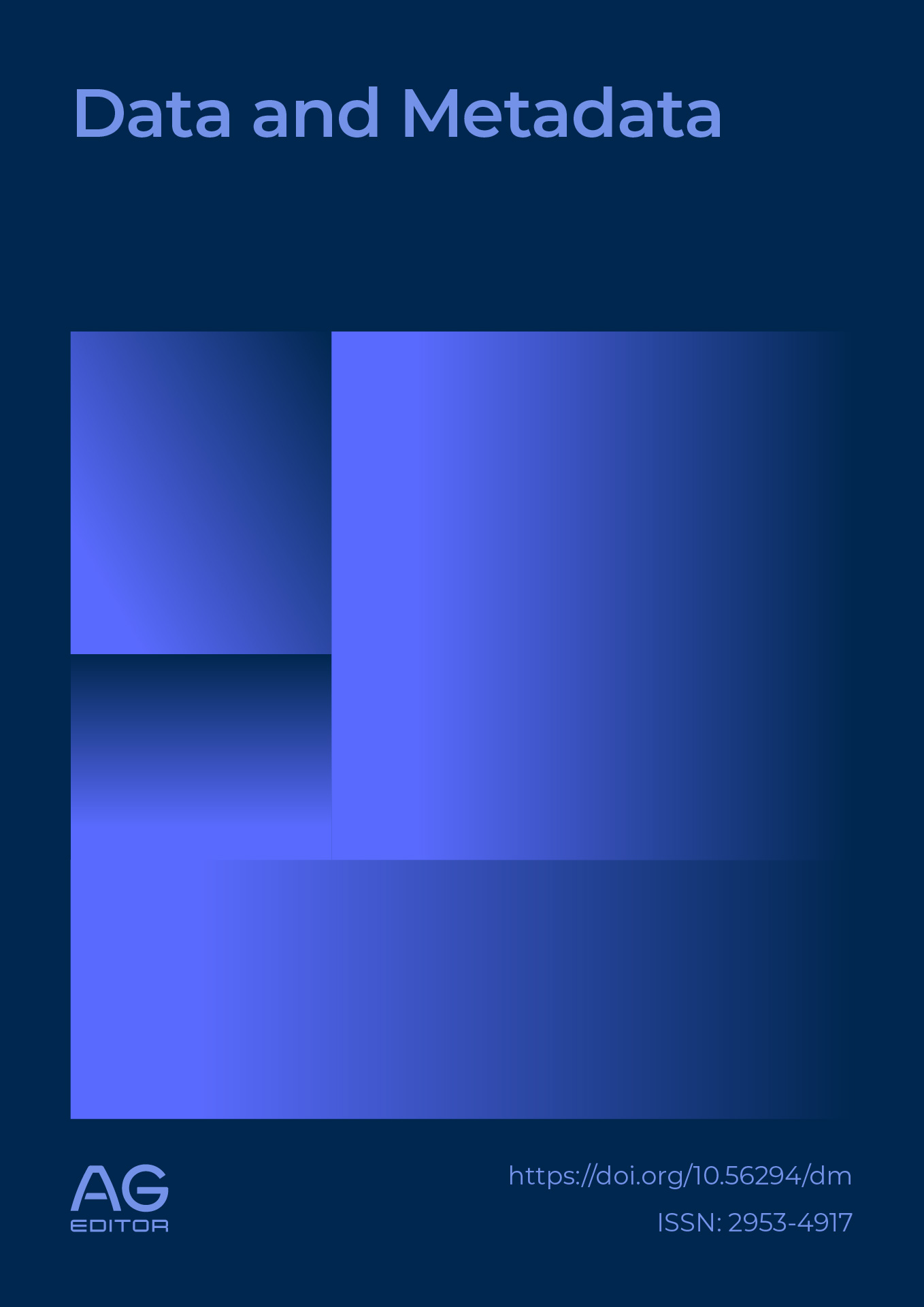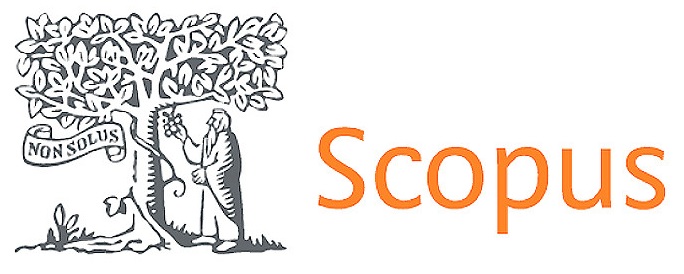Design of an information system for the management, visibility, and scientific positioning in research centers: CRIS-AGROSAVIA System study case
DOI:
https://doi.org/10.56294/dm2025451Keywords:
Current Agricultural Research Information System, data management, software developmentAbstract
This research focused on the use of technology to facilitate the management of resources, products, and knowledge services in research, development, and innovation (R+D+i) organizations. Specifically, it highlighted how Current Research Information Systems (CRIS) could be employed for this purpose. The study aimed to develop and implement a CRIS information system at the AGROSAVIA Research Center, with an emphasis on integrating the system with institutional repositories and external/internal systems to manage scientific and technological knowledge assets effectively.
Methods:
The process of creating the CRIS involved several stages: planning, requirements analysis, system design, development, and implementation. Key elements included the deployment of system interfaces for the target audience (stakeholders of the National System of Science, Technology, and Innovation) and the use of a recognized data model (CERIF standard) to enhance metadata generation, ensure standardization, and enable interoperability with external and internal systems.
Results:
The system was designed with two primary interfaces: a public version for the external scientific community and a corporate version for internal users of the research center. The CERIF-based data model facilitated repository structuring and the loading of an initial data baseline, supporting effective data management and decision-making processes.
Conclusion:
This study provides a valuable case for those looking to build information systems for knowledge management. The CRIS developed at AGROSAVIA acted as a tool for process evaluation, scientific communication, and dissemination, offering key insights into the technological architecture, data management model, and technological deployment required for such systems
References
1. Jeffery KG. The New Technologies: Can CRISs Benefit? In: “Putting the Sparkle in the Knowledge Society”: Proceedings of the 7th International Conference on Current Research Information Systems (2004) [Internet]. Antwerp: euroCRIS; 2004 [cited 2024 Mar 5].
2. SMITH M, BUSI M, BALL P, VAN DER MEER R. FACTORS INFLUENCING AN ORGANISATION’S ABILITY TO MANAGE INNOVATION: A STRUCTURED LITERATURE REVIEW AND CONCEPTUAL MODEL. International Journal of Innovation Management. 2008;12(04):655–76. DOI: 10.1142/S1363919608002138 DOI: https://doi.org/10.1142/S1363919608002138
3. Iskandar K, Jambak MI, Kosala R, Prabowo H. Current Issue on Knowledge Management System for future research: A Systematic Literature Review. Procedia Comput Sci. Elsevier B.V.; 2017;116:68–80. DOI: 10.1016/J.PROCS.2017.10.011 DOI: https://doi.org/10.1016/j.procs.2017.10.011
4. González LI, Ramírez-Montoya MS, García-Peñalvo FJ, Gibrán H, Juárez EA. RITEC & CRIS: Interoperabilidad para visibilidad y medición del impacto de la producción científica energética. In: Ramírez-Montoya MS, Mendoza-Domínguez A, editors. Madrid, España; 2018 [cited 2023 Jun 13]. Available from: https://gredos.usal.es/bitstream/handle/10366/139459/Cap2.pdf?sequence=1
5. Ntini-Kounoudes A, Zervas M. The Transformation of the Ktisis Repository into a Current Research Information System (CRIS). Expanding Perspectives on Open Science: Communities, Cultures and Diversity in Concepts and Practices - Proceedings of the 21st International Conference on Electronic Publishing. IOS Press; 2017;227–34. DOI: 10.3233/978-1-61499-769-6-227
6. Kovačević A, Ivanović D, Milosavljević B, Konjović Z, Surla D. Automatic extraction of metadata from scientific publications for CRIS systems. Program. 2011;45(4):376–96. DOI: 10.1108/00330331111182094 DOI: https://doi.org/10.1108/00330331111182094
7. Penca V, Nikolić S, Ivanović D, Konjović Z, Surla D. SRU/W-based CRIS systems search profile. Program. Emerald Group Publishing Ltd.; 2014;48(2):140–66. DOI: 10.1108/PROG-07-2012-0040 DOI: https://doi.org/10.1108/PROG-07-2012-0040
8. Carr-Wiggin M, Rothfus M, Barrett A, Bourne-Tyson D. Implementing a Current Research Information System (CRIS) in Canada. In: Annual IATUL Conference [Internet]. Purdue University; 2019 [cited 2023 May 10].
9. Lappalainen Y, Lassila M, Heikkilä T, Nieminen J, Lehtilä T. Migrating 120,000 Legacy Publications from Several Systems into a Current Research Information System Using Advanced Data Wrangling Techniques. Publications. 2023;11(4):49. DOI: 10.3390/publications11040049 DOI: https://doi.org/10.3390/publications11040049
10. Azeroual O, Schöpfel J, Ivanovic D, Nikiforova A. Combining Data Lake and Data Wrangling for Ensuring Data Quality in CRIS. Procedia Comput Sci. 2022;211:3–16. DOI: 10.1016/j.procs.2022.10.171 DOI: https://doi.org/10.1016/j.procs.2022.10.171
11. Schöpfel J, Prost H, Rebouillat V. Research Data in Current Research Information Systems. Procedia Comput Sci. Elsevier; 2017;106:305–20. DOI: 10.1016/J.PROCS.2017.03.030 DOI: https://doi.org/10.1016/j.procs.2017.03.030
12. Sales L, Sayão LF. Cyberinfrastructure information for research: A proposal for architecture for integrating repositories and CRIS systems. Informação & Sociedade [Internet]. 2015;25(3):163–84. Available from: http://www.eurocris.org/cerif/main-features-cerif
13. Medina González A, Torres Ponjuan D. Sistema de información para la investigación en el Instituto Nacional de Deportes, Educación Física y Recreación (INDER). Information system for research at the National Institute of Sports, Physical Education and Recreation (INDER). 2018 [cited 2023 Jun 12];
14. Azeroual O, Saake G, rgen Wastl J, Wastl JuergenWastl J. Data measurement in research information systems: metrics for the evaluation of data quality. Scientometrics. 2018;115:1271–90. DOI: 10.1007/s11192-018-2735-5 DOI: https://doi.org/10.1007/s11192-018-2735-5
15. Dvořák J, Bollini A, Rémy L, Schirrwagen J. OpenAIRE Guidelines Release 1.1.1 OpenAIRE. 2018 [cited 2023 Jun 14]. Available from: https://doi.org/10.5281/zenodo.2316420
16. Scholze F, Maier J. Establishing a Research Information System as Part of an Integrated Approach to Information Management: Best Practice at the Karlsruhe Institute of Technology (KIT). LIBER Quarterly. 2012;21. DOI: 10.18352/lq.8019 DOI: https://doi.org/10.18352/lq.8019
17. de Castro P, Shearer K, Summann F. The Gradual Merging of Repository and CRIS Solutions to Meet Institutional Research Information Management Requirements. Procedia Comput Sci. 2014;33:39–46. DOI: 10.1016/j.procs.2014.06.007 DOI: https://doi.org/10.1016/j.procs.2014.06.007
18. Riechert MT. RIDAL – A Language for Research Information Definition Argumentation. Data Sci J. 2017;16. DOI: 10.5334/dsj-2017-005 DOI: https://doi.org/10.5334/dsj-2017-005
19. Bailo D, Jeffery KG. EPOS: A Novel Use of CERIF for Data-intensive Science. Procedia Comput Sci. 2014;33:3–10. DOI: 10.1016/j.procs.2014.06.002 DOI: https://doi.org/10.1016/j.procs.2014.06.002
20. Dvořák J, Brasse V. CERIF Tutorial: Autumn 2019 Münster strategic membership meeting. In: euroCRIS [Internet]. 2019 [cited 2024 Mar 5].
21. Azeroual O, Saake G, Abuosba M. ETL Best Practices for Data Quality Checks in RIS Databases. Informatics. 2019;6(1):10. DOI: 10.3390/informatics6010010 DOI: https://doi.org/10.3390/informatics6010010
22. Carrillo de Gea JM, Nicolás J, Fernández Alemán JL, Toval A, Ebert C, Vizcaíno A. Requirements engineering tools: Capabilities, survey and assessment. Inf Softw Technol. 2012;54(10):1142–57. DOI: 10.1016/j.infsof.2012.04.005 DOI: https://doi.org/10.1016/j.infsof.2012.04.005
23. Atwan J, Mohd M, Kanaan G. Enhanced Arabic Information Retrieval: Light Stemming and Stop Words. 2013;219–28. DOI: 10.1007/978-3-642-40567-9_19 DOI: https://doi.org/10.1007/978-3-642-40567-9_19
24. Salinas I, Lera I, Guerrero C, Juiz C, Sukic E. TOWARDS A SEMANTIC RESEARCH INFORMATION SYSTEM BASED ON RESEARCHERS’ CV DOCUMENTS. International Journal for Quality Research. 2019;13(1):131–44. DOI: 10.24874/IJQR13.01-08 DOI: https://doi.org/10.24874/IJQR13.01-08
25. Liu W, Shi X, Zheng J, Li R. Characteristics of the knowledge graph of scientific and technological innovation in Gansu Province. Environ Dev Sustain. 2023;26(4):10827–43. DOI: 10.1007/s10668-023-03124-0 DOI: https://doi.org/10.1007/s10668-023-03124-0
26. Mannaert H, Verelst J, Ven K. Towards evolvable software architectures based on systems theoretic stability. Softw Pract Exp. 2012;42(1):89–116. DOI: 10.1002/spe.1051 DOI: https://doi.org/10.1002/spe.1051
27. Biesenbender S, Hornbostel S. The Research Core Dataset for the German science system: developing standards for an integrated management of research information. Scientometrics. 2016;108(1):401–12. DOI: 10.1007/s11192-016-1909-2 DOI: https://doi.org/10.1007/s11192-016-1909-2
28. Kremenjaš D, Udovičić P, Orel O. Adapting CERIF for a national CRIS: A case study. 43rd International Convention on Information, Communication and Electronic Technology (MIPRO). 2020;1633–8. DOI: 10.23919/MIPRO48935.2020.9245344. DOI: https://doi.org/10.23919/MIPRO48935.2020.9245344
29. Edris Abadi R, Ershadi MJ, Niaki STA. A clustering approach for data quality results of research information systems. Inf Discov Deliv. Emerald Publishing; 2022; ahead-of-print(ahead-of-print). DOI: 10.1108/IDD-07-2022-0063/FULL/PDF DOI: https://doi.org/10.1108/IDD-07-2022-0063
30. Rybinski H, Skonieczny L, Koperwas J, Struk W, Stepniak J, Kubrak W. Integrating IR with CRIS – a novel researcher-centric approach. Program. 2017;51(3):298–321. DOI: 10.1108/PROG-04-2017-0026 DOI: https://doi.org/10.1108/PROG-04-2017-0026
31. Flórez Martínez DH, Sanchez-Torres JM, Rodríguez-Romero CA. Gestión de agendas de investigación, desarrollo tecnológico e innovación a través de procesos de gestión de conocimiento, un estudio de caso. Proceedings of the 16th LACCEI International Multi-Conference for Engineering, Education, and Technology: “Innovation in Education and Inclusion.” Latin American and Caribbean Consortium of Engineering Institutions; 2018; DOI: 10.18687/LACCEI2018.1.1.1 DOI: https://doi.org/10.18687/LACCEI2018.1.1.1
32. Ivanovic L, Dimic Surla B, Surla D, Ivanovic D, Konjovic Z, Rudic G. Improving the discoverability of PhD student work through a CRIS system. The Electronic Library. 2018;36(3):471–86. DOI: 10.1108/EL-05-2016-0104 DOI: https://doi.org/10.1108/EL-05-2016-0104
33. Delen D, Demirkan H. Data, information and analytics as services. Decis Support Syst. 2013;55(1):359–63. DOI: 10.1016/j.dss.2012.05.044 DOI: https://doi.org/10.1016/j.dss.2012.05.044
34. Tian Q, Ma J, Liu O. A hybrid knowledge and model system for R&D project selection. Expert Syst Appl. 2002;23(3):265–71. DOI: 10.1016/S0957-4174(02)00046-5. DOI: https://doi.org/10.1016/S0957-4174(02)00046-5
Downloads
Published
Issue
Section
License
Copyright (c) 2025 Betty Jazmín Gutiérrez-Rodríguez, Óscar Javier Vásquez-Casallas, Carlos Arturo Bedoya Sánchez, Diego Hernando Flórez Martínez (Author)

This work is licensed under a Creative Commons Attribution 4.0 International License.
The article is distributed under the Creative Commons Attribution 4.0 License. Unless otherwise stated, associated published material is distributed under the same licence.




